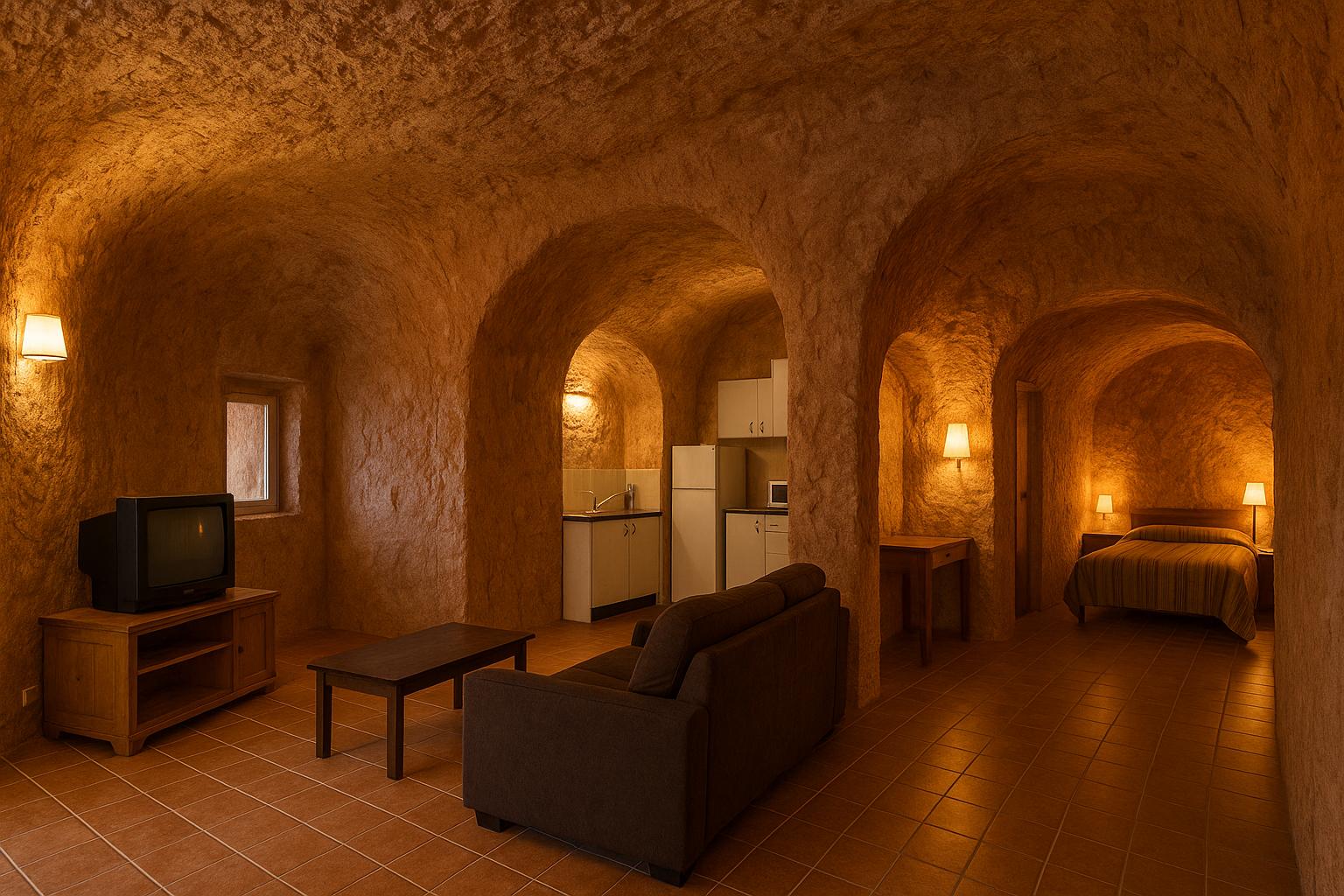Contents
The Unique Underground Homes of Coober Pedy
In the South Australian Outback, the town of Coober Pedy presents a remarkable example of human adaptation to extreme environmental conditions. Famous for its opal mining, Coober Pedy is also known for its unique underground homes, often referred to as “dugouts”. These subterranean residences offer a fascinating look into how residents have creatively tackled the challenges of living in an arid and intensely hot climate.
Why Underground?
The climate in Coober Pedy is typified by scorching hot temperatures during the day, which can drop significantly at night. Living above ground poses significant challenges, as summer temperatures can soar above 40°C (104°F). To combat this, many of Coober Pedy’s inhabitants have chosen to build their homes underground. This not only provides a stable and comfortable living environment throughout the year but also minimizes the need for artificial cooling, thereby reducing energy costs.
Construction Techniques
Building a home underground may sound daunting, but in Coober Pedy, it is a tried-and-tested technique. The homes are typically carved into the hillsides or dug into the ground using specialized mining equipment. This allows residents to efficiently create spacious living areas with natural insulation against Coober Pedy’s harsh climate.
Ventilation is achieved through shafts that provide fresh air and maintain proper air quality. Moreover, the soil and rock primarily consist of soft sandstone, which is relatively easy to excavate while providing sufficient structural stability.
The Interior Experience
Despite being located underground, the interiors of these homes are far from primitive. Most dugouts are equipped with modern amenities, including electricity, plumbing, and contemporary furnishings. Rooms are often spacious with high ceilings, creating an airy and comfortable environment. Interiors are commonly painted in light colors to enhance brightness, and recessed lighting fixtures are widely used to substitute for natural light.
The architectural design of Coober Pedy’s underground homes allows for customization, with many homeowners opting for unique styles and décor to suit their preferences. The use of local materials not only reflects the surrounding landscape but also adds a sense of connectedness to the environment.
Cultural and Tourism Impact
The underground homes of Coober Pedy have not only influenced the lifestyle of its residents but also captivate tourists from around the world. The town’s unique architectural style draws visitors interested in experiencing first-hand how people live underground. As a result, many underground homes are now partially or fully converted into accommodations and museums, providing insight into this innovative lifestyle.
The growing interest in sustainable living has further fueled curiosity about Coober Pedy’s dugouts. The town is increasingly seen as a model of eco-friendly construction, offering valuable lessons on energy conservation and sustainable architecture.
For more information on visiting Coober Pedy, you might consider exploring a variety of travel resources available online that discuss its attractions and logistics. You can find further details on how to plan your visit through South Australian travel websites.
Through their innovative architectural solutions, the residents of Coober Pedy have not only managed to survive in a challenging environment but also to flourish. The underground homes stand as a testament to human ingenuity and resourcefulness in adapting to the extremes of nature. By blending traditional practices with modern technology, Coober Pedy offers a living example of how communities can thrive in seemingly inhospitable locations.
Historical Context and Evolution
The history of Coober Pedy’s underground homes dates back to the early 20th century when European settlers began mining opals in the region. The initial struggle with Coober Pedy’s arid climate led to the practice of creating makeshift shelters in the form of dugouts. Over time, this practice evolved into more elaborate and permanent underground homes. Today, these structures reflect an adaptive lifestyle that encompasses both function and comfort.
Modern Adaptations
As technology continues to advance, so do the underground homes of Coober Pedy. Residents have integrated solar power and advanced climate control systems to further enhance the energy efficiency of these homes. This has not only improved the quality of life but also reduced the environmental footprint of Coober Pedy’s energy consumption.
Advanced building techniques have also allowed for the expansion and enhancement of living spaces, giving rise to larger and more complex home designs that cater to the diverse needs of their inhabitants.
Community and Lifestyle
The community life in Coober Pedy is uniquely influenced by its underground living conditions. Residents enjoy a tight-knit community where neighbors rely on one another, particularly given the town’s remote location. Social events and cultural festivals often reflect the unique heritage and lifestyle of Coober Pedy, celebrating both the challenges and triumphs of living underground.
Community initiatives often focus on sustainability and cultural preservation, drawing on the ingenuity that defines Coober Pedy. As a result, the town has become a hub for innovative ideas and practices that harmonize with its natural surroundings.
As Coober Pedy continues to garner international interest, the town remains committed to preserving its unique way of life while welcoming new ideas and perspectives. The underground homes and their history serve as a living museum of human adaptability and will likely continue to inspire generations to come.

